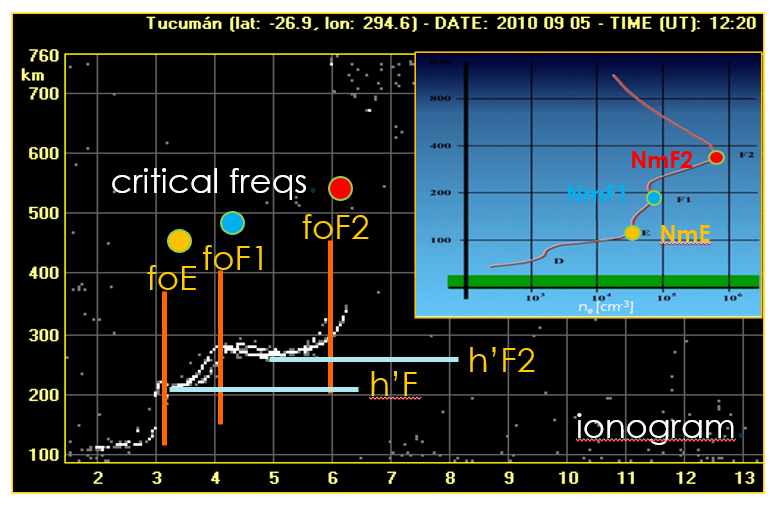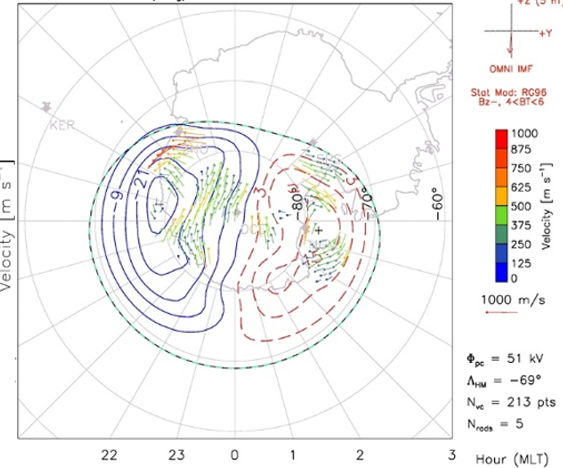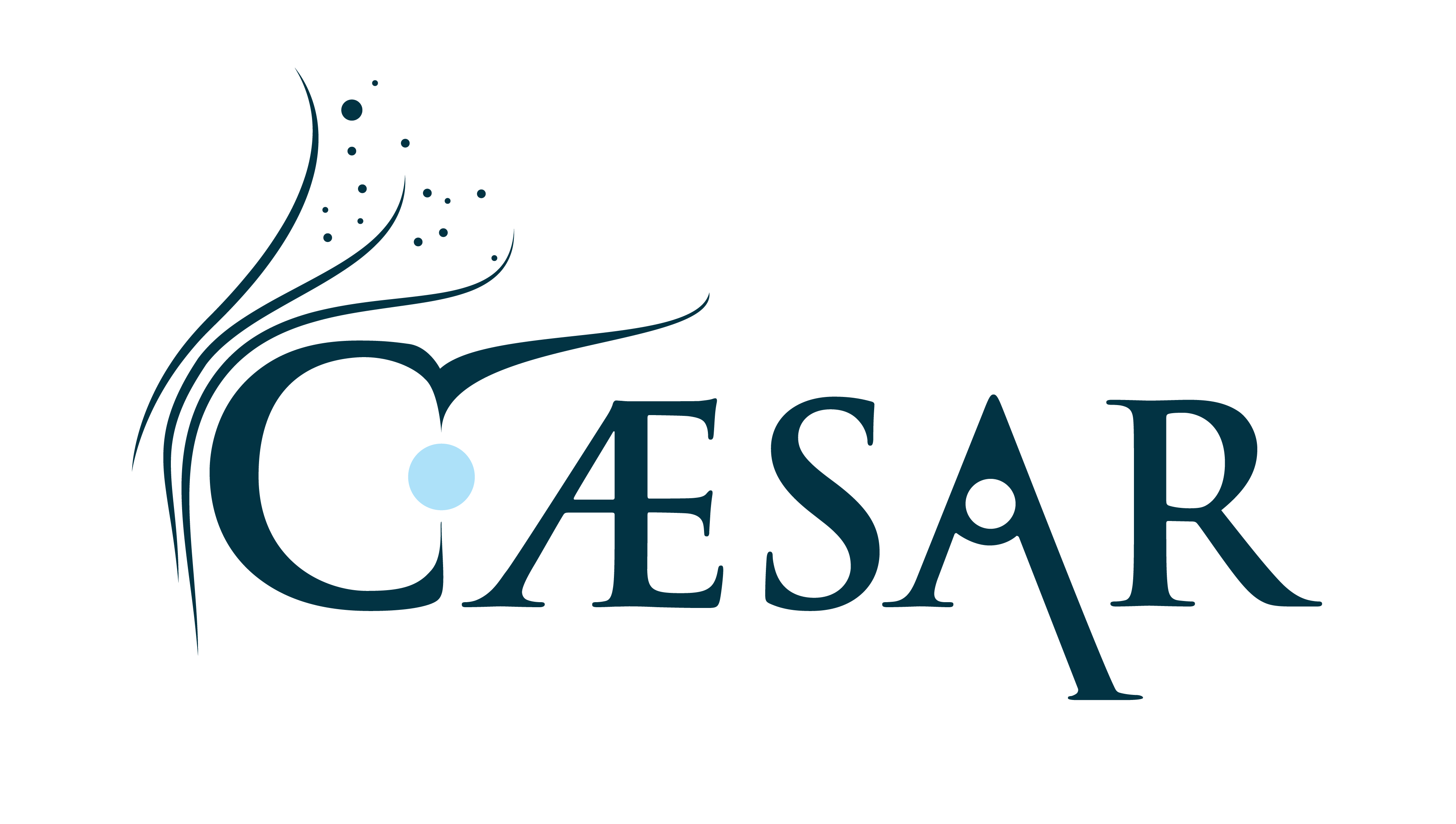WP1410
Magnetosphere-ionosphere coupling via ground-based observations
WP1410 investigates the structure and physical conditions of the ionosphere via ground-based information (HF radar networks and ionosonde facilities). WP1410 will use the ionosonde facilities managed by INGV at Rome and Gibilmanna (Italy) and co-managed by INGV at Tucuman and Bahia Blanca (Argentina)(data from both hemispheres). The ionosondes perform a vertical sounding of the ionosphere (0.1-20MHz) detecting its key parameters, as the critical frequencies related to E and F layers, their heights and el. densities. They also allow probing the optimal frequencies for radio communications (HF): the Maximum Usable Frequency (MUF) and the skip-distance are fundamental parameters for characterizing the state of the ionosphere and the radio communications, in particular during Space Weather Events. WP1410 will use data from the Super Dual Auroral Radar Network (SuperDARN), consisting of more than 30 high frequency radars (~8-20MHz), located between middle to polar latitudes, in both hemispheres. They are devoted to the study of the ionospheric plasma convection, by measuring the Doppler phase of the radio signals back-scattered from density irregularities in the ionosphere (E and F layers), since these follow the motion of the ambient plasma, the large-scale convection of the ionospheric plasma, mainly driven by the interplanetary conditions, can be reconstructed. Moreover, by the derivation of the Cross-Polar Cap Potential (CPCP), a qualitative proxy of the energy transfer from the magnetosphere to the ionosphere can be estimated.


circulation in the southern hemisphere modelled from SuperDARN network data (lower panel).

